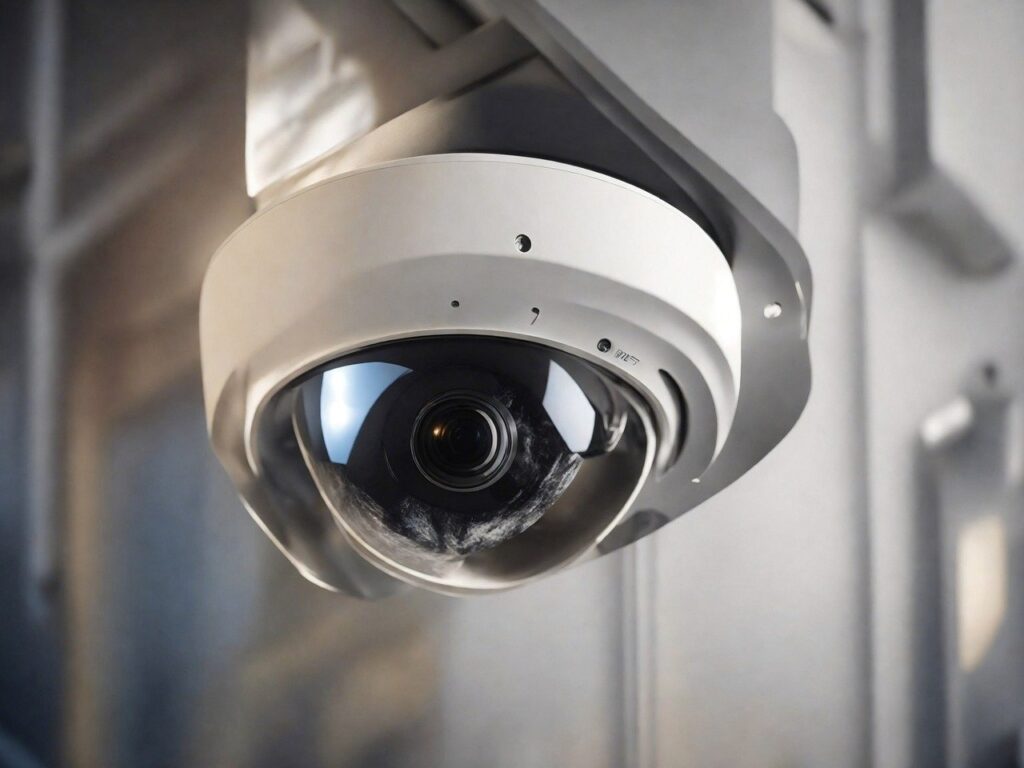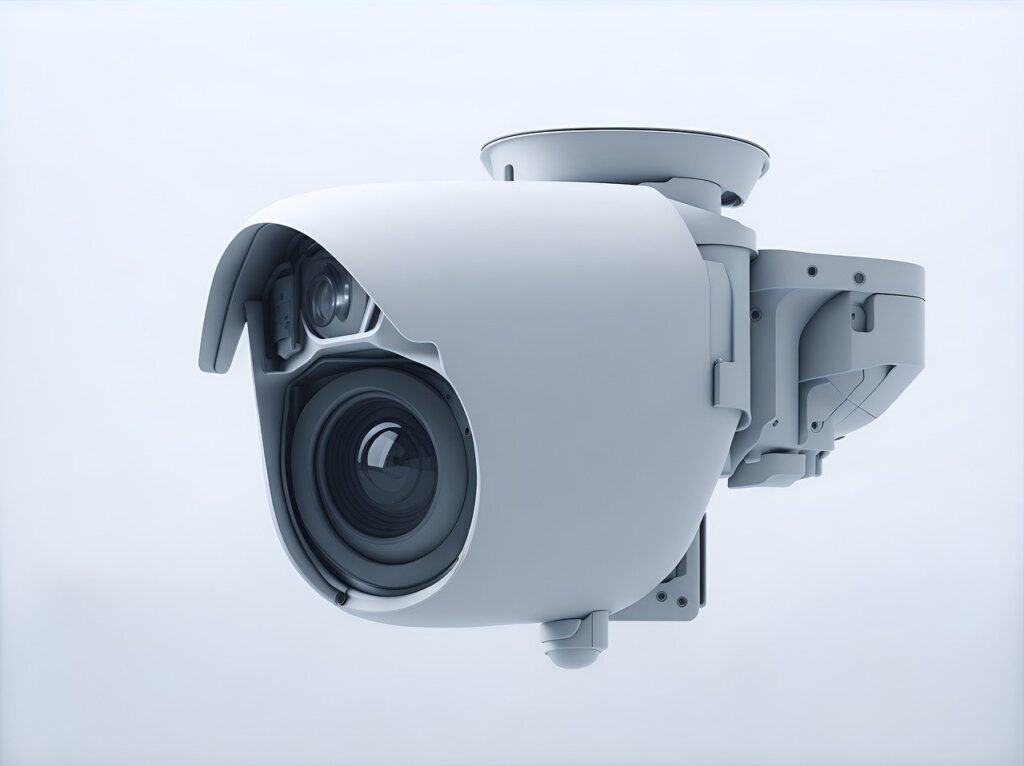As we move through 2024, the integration of cutting-edge technologies has dramatically transformed traditional surveillance methods.
From AI-driven analytical precision to eco-friendly solar-powered options and ultra-high-resolution panoramic cameras, these innovations are setting new standards in surveillance effectiveness.
Advancement One: AI-Integrated Surveillance Systems

AI-integrated surveillance systems incorporate artificial intelligence to analyze video footage in real time, significantly enhancing the efficiency and effectiveness of surveillance.
AI algorithms can detect unusual activities, recognize faces, and even track specific objects, alerting security personnel to potential threats more swiftly than traditional methods. This level of automation reduces the burden on human monitors and minimizes response times to incidents.
Moreover, the integration of AI allows for the collection and analysis of vast amounts of data, which can be used to identify patterns and predict potential security breaches before they occur.
Benefits
- Enhanced Real-Time Analysis: AI enables CCTV systems to process and interpret video data as events unfold, allowing for immediate response to potential security threats.
- Improved Facial and Object Recognition: With AI, cameras can accurately identify individuals and objects, differentiating between regular activity and potential security risks.
- Reduction in False Alarms: Intelligent systems reduce the likelihood of false alarms by distinguishing between benign incidents and genuine threats, thereby optimizing security personnel’s response times.
Example of Leading Technology
A leading example of AI-integrated CCTV technology is the SmartVision AI Surveillance Hub. This model combines real-time video analytics with cloud-based technology to offer unprecedented accuracy in threat detection and behavioral analytics.
Possible Limitations or Considerations
- Privacy Concerns: The enhanced capabilities of AI CCTV systems raise significant privacy issues, necessitating strict compliance with privacy laws and regulations.
- High Cost: The initial setup and maintenance of AI-integrated systems can be costly, potentially limiting access to larger enterprises or those with significant security budgets.
This advancement in CCTV technology not only elevates security measures but also introduces challenges that need careful consideration to balance safety with privacy rights.
Advancement Two: Wireless and Solar-Powered CCTV Systems

These systems are particularly valued for their flexibility and eco-friendliness. Without the need for traditional power sources or complex wiring, they can be installed in a variety of locations, from remote areas to urban settings where running cables would be impractical.
Solar power, harnessing the sun’s energy, ensures that these cameras can operate continuously, even during power outages or in regions where electricity is unreliable.
This setup reduces operational costs by cutting down on electricity use and also minimizes the environmental impact, aligning well with growing sustainability trends. Additionally, the wireless nature of these systems simplifies scalability and adjustments.
Benefits
- Easier Installation with Fewer Restrictions: Wireless systems can be installed virtually anywhere, without the need for extensive cabling, making it ideal for remote or hard-to-reach locations.
- Eco-Friendly and Cost-Effective in the Long Term: Solar-powered CCTV systems utilize renewable energy, significantly reducing electricity usage and ongoing operational costs.
- Enhanced Reliability and Uptime: These systems are less susceptible to power outages, ensuring continuous operation and surveillance coverage.
Case Study
A notable implementation of this technology is at the Royal Botanic Gardens in Sydney, where solar-powered, wireless cameras have been installed to monitor vast areas without the need for conventional power sources. This setup not only protects the site but also preserves the natural aesthetics of the environment.
Potential Challenges
- Solar Performance on Cloudy Days: Solar-powered CCTV systems may experience reduced efficiency during overcast weather, which could affect their reliability.
- Security of Wireless Data Transmission: While wireless systems offer installation ease, they also pose risks related to data interception and require robust encryption to secure the transmission of surveillance data.
Advancement Three: 360-Degree Panoramic Cameras with 4K Resolution

360-degree panoramic cameras equipped with 4K resolution offer a comprehensive view of their surroundings, eliminating the blind spots typical of traditional cameras.
The high-definition 4K resolution ensures that the images captured are strikingly clear, providing fine details that are crucial for identifying individuals or specific activities, even at greater distances.
This panoramic coverage paired with high resolution is useful in areas where expansive or uninterrupted monitoring is necessary, such as public spaces, large retail environments, or event venues.
It allows security personnel to oversee a vast area from a single vantage point, which simplifies monitoring and reduce the number of cameras needed to secure a location.
Additionally, the data captured by these cameras is immensely valuable for post-incident analysis, offering clear and detailed imagery that can be crucial for investigations.
Technology Explained
360-degree panoramic cameras utilize multiple camera lenses or a specialized optical design to capture a full 360-degree view of the surrounding area. When combined with 4K resolution, these cameras produce incredibly sharp images, allowing for detailed video playback and analysis.
Advantages
- Wider Area Coverage: The panoramic view significantly reduces the number of cameras required to monitor large areas, lowering installation and maintenance costs.
- Higher Image Quality: 4K resolution ensures that even the minutest details are captured, crucial for the identification of individuals and activities in recorded footage.
- Ideal for Both Indoor and Outdoor Usage: These cameras are versatile enough to be effective in a variety of settings, from open outdoor spaces to large indoor areas like warehouses or shopping centers.
Integration with Smart Systems
360-degree panoramic cameras can be integrated seamlessly into existing smart home or broader security systems. This integration allows for functionalities such as automated alerts and remote monitoring through smartphones or other devices, enhancing overall security responsiveness.
Considerations
- Storage Requirements: The high-resolution footage requires significant storage capacity, which can increase operational costs.
- Bandwidth Needs: Transmitting high-quality video over networks requires substantial bandwidth to maintain video quality without lag or interruption.
The deployment of 360-degree panoramic cameras with 4K resolution offers unparalleled surveillance capabilities, making it a formidable tool in modern security setups.
However, the enhanced capabilities come with increased demands on infrastructure, which must be carefully planned to fully leverage the benefits of this technology.
Comparative Analysis
1. AI-Integrated Surveillance Systems
- Comparison: Traditional CCTV systems rely on human monitoring for threat detection, which can lead to slower response times and higher rates of false alarms. AI-integrated systems, in contrast, offer automated real-time analysis, improving accuracy and reducing manpower costs.
- Best Utilization: AI-integrated systems are ideal in high-traffic areas such as airports, malls, and urban centers where their ability to quickly analyze large volumes of footage and identify anomalies can be most beneficial.
2. Wireless and Solar-Powered CCTV Systems
- Comparison: Older CCTV systems often require complex wiring and constant power supply, which can limit their placement and lead to higher installation costs. Wireless and solar-powered systems offer greater flexibility and are less invasive to install.
- Best Utilization: These systems are particularly suited for remote or environmentally sensitive locations such as national parks, rural properties, and historical sites where wiring is impractical or undesirable.
3. 360-Degree Panoramic Cameras with 4K Resolution
- Comparison: Traditional cameras typically provide a limited field of view, requiring multiple units to cover all angles, which can result in blind spots. The 360-degree panoramic cameras eliminate these blind spots and offer high-resolution footage, ensuring detailed coverage from a single vantage point.
- Best Utilization: These cameras are excellent for both indoor and outdoor environments that require comprehensive monitoring with minimal equipment, such as large-scale retail environments, parking lots, and public squares.
Overall Comparison
- Cost-Effectiveness: While newer technologies may involve higher initial costs, their enhanced capabilities and efficiency can lead to long-term savings on manpower and maintenance.
- Installation Complexity: Traditional systems often involve more complex and disruptive installation processes compared to modern wireless setups.
- Maintenance and Scalability: Older CCTV systems can be more labor-intensive to maintain and harder to scale compared to modular, easily integrated modern systems.
Key Takeaway
AI-integrated systems enhance real-time analysis and reduce false alarms, offering precise security monitoring. Wireless and solar-powered cameras promote flexible, eco-friendly installations, particularly useful in remote and sensitive locations.
Moreover, 360-degree panoramic cameras with 4K resolution provide comprehensive coverage with exceptional detail, reducing the need for multiple cameras.
These innovations not only elevate the effectiveness of security systems but also introduce new challenges and considerations, such as privacy concerns and increased infrastructure demands.
As security technology continues to evolve, staying informed about these trends is crucial for anyone involved in or dependent on surveillance practices.
To remain ahead in security advancements and understand their practical applications, keep engaging with the latest research and updates in security technology.
